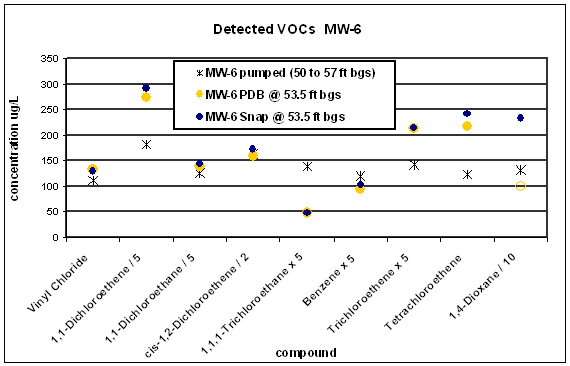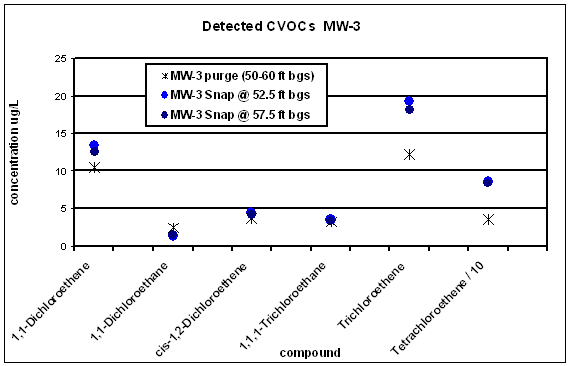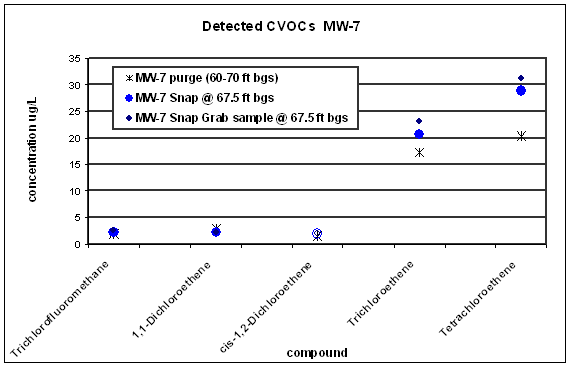Confidential site near Los Angeles, California
This site recently completed its 33rd quarter of groundwater monitoring with the Snap Sampler.
To compare variability of the Snap Sampler with traditional volume purge methods, contaminant concentration changes over 9 monitoring periods were compared. Quarter-to-quarter changes in contaminant concentrations were tabulated and quarter-to-quarter relative percent change was compared. There were 81 Snap comparisons and 100 purge comparisons. The Snap Sampler displayed a lower degree of variation from quarter to quarter than the purge results. Overall, the variation of the purge results was 50% higher than the Snap Sampler results.
Trendspotting with the Snap
Less variability = earlier trend identification
A recent presentation by Sanford Britt at the "Nielsen" North American Filed Conference and Exposition in Tampa, Florida, illustrates the Data Variability Reduction concept. Data from this site is used to show how the Snap Sampler can reduce Quarter-to-Quarter data noise.
Los Angeles site side-by-side data comparisons:

In this data set, three samples are compared. The Snap Sampler and polyethylene diffusion bag were deployed 10 days prior to retrieval. Following retrieval of the passive samplers, the well was purged by 3 to 5 well volume method and sampled with a bailer collected with a bailer according to the site's standard procedure. These data show the PDB and Snap Sampler largely match with the Snap Sampler showing slightly higher results for most compounds.

This data set compares Snap Samples collected at two depths in a ten foot well screen with a 3 to 5 well-volume pumped sample collected with a bailer. The Snap Sampler data shows relative consistency between the two depth intervals--indicating a relatively unstratified well. Most detected constituents were comparable between the two methods, with the Snap Sampler showing slightly higher results. TCE and PCE show somewhat higher results with the Snap Sampler.
This data set compares Snap Samples collected at the same depth in a ten foot well screen, with one Snap Sample collected after deployment for 10 days, and the other collected immediately after by redeploying the Snap Sampler to the same depth and triggering the sampler right away. These data are compared to a 3 to 5 well-volume pumped sample collected with a bailer according to the site's standard procedure. The Snap Sampler data shows relative consistency between the two predeployment collection methods and the immediate collection method. TCE and PCE show somewhat higher results with the Snap Sampler by both collection methods.
